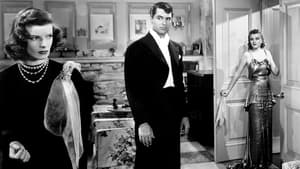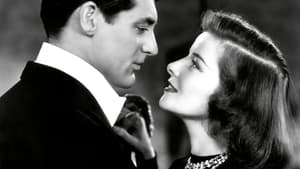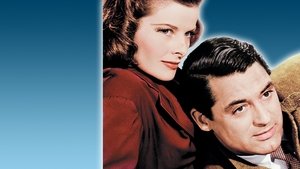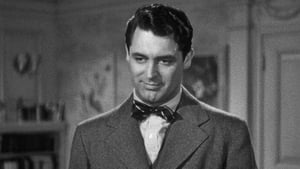Contact: [email protected]
Video Sources 0 Views
- Watch trailer
- Holiday


Synopsis
Table of Contents
ToggleReview: Holiday (1938) – A Classic Romantic Comedy Sparkling with Timeless Charm

Introduction
“Holiday” (1938) stands as a delightful testament to the enduring appeal of romantic comedies, enchanting audiences with its wit, charm, and heartfelt performances. In this article, we’ll delve into the significance of this beloved classic, exploring its impact on audiences and its lasting legacy in the realm of romantic cinema.
Check The Full Colorized Movies List
Check Our Colorized Movies Trailer Channel
Understanding Holiday 1938: Director, Cast, and Genre
Directed by the legendary George Cukor, “Holiday” (1938) showcases his talent for crafting sophisticated comedies that resonate with viewers of all ages. The film boasts a stellar cast, including Katharine Hepburn and Cary Grant, whose on-screen chemistry lights up the screen with laughter and romance. Blending elements of comedy, romance, and drama, “Holiday” (1938) transports audiences to a world where love is both a source of joy and a catalyst for self-discovery.
Exploring the World of Holiday 1938: Plot and Characters
At its heart, “Holiday” (1938) tells the story of a free-spirited young woman named Linda Seton, played by Katharine Hepburn, who falls in love with a charming but unconventional man named Johnny Case, portrayed by Cary Grant. As they navigate the complexities of family expectations and societal norms, they discover that true happiness lies not in wealth or social status, but in following their hearts and pursuing their passions. Along the way, they encounter a colorful cast of characters who challenge their beliefs and open their eyes to new possibilities.
The Art of Film Colorization
While “Holiday” (1938) was originally filmed in black and white, its timeless appeal has led to numerous attempts to colorize the film for modern audiences. By digitally adding color to the film’s richly drawn characters and lush settings, colorization breathes new life into “Holiday” (1938), allowing viewers to experience its magic in vibrant hues and vivid detail.
Early Colored Films: A Brief History
The history of colored films dates back to the early days of cinema, with filmmakers experimenting with various techniques to add color to their creations. From hand-tinted frames to early Technicolor processes, the evolution of colored film has been marked by innovation and ingenuity, paving the way for the development of modern colorization techniques that continue to captivate audiences to this day.
Holiday 1938 and Its Early Colored Version
The decision to release “Holiday” (1938) in a colorized format was met with both excitement and trepidation. While some welcomed the opportunity to experience the film in vibrant color, others expressed concerns about the potential impact on its visual aesthetic. Nevertheless, the early colored version of “Holiday” (1938) offers viewers a fresh perspective on the timeless tale of love and self-discovery, enhancing its emotional resonance and captivating audiences with its luminous beauty.
The Debate Over Film Colorization
The debate over film colorization continues to divide audiences and critics alike, with proponents praising its ability to breathe new life into classic movies and introduce them to a new generation of viewers, while detractors argue that it compromises the artistic integrity of the original work and diminishes its historical significance. As the debate rages on, filmmakers and audiences alike are left to ponder the merits and drawbacks of colorization in the ever-evolving landscape of cinema.
Examining Holiday 1938 as an Early Colored Film
As with any colorized classic, the impact of colorization on “Holiday” (1938) is a matter of personal interpretation. Some may argue that it enhances the film’s visual appeal and immerses viewers in its world, while others may feel that it detracts from the stark beauty of the original black and white version. Regardless of one’s stance on the issue, there’s no denying the enduring power of “Holiday” (1938) as a timeless romantic comedy that continues to capture the hearts of audiences around the world.
Influence and Legacy: Holiday 1938’s Impact on Cinema
“Holiday” (1938) has left an indelible mark on the world of cinema, inspiring countless filmmakers and captivating audiences with its timeless tale of love and self-discovery. From its unforgettable performances to its witty dialogue and sophisticated humor, the film continues to resonate with viewers of all ages, reaffirming its status as a beloved classic of the romantic comedy genre.
Director’s Cinematic Legacy: Beyond Holiday 1938
George Cukor’s influence extends far beyond “Holiday” (1938), with a diverse body of work that continues to captivate audiences around the globe. From “The Philadelphia Story” to “My Fair Lady,” Cukor’s films are celebrated for their wit, charm, and timeless appeal, solidifying his legacy as one of the preeminent directors of Hollywood’s Golden Age. Through his groundbreaking work, Cukor has left an indelible imprint on the world of cinema, inspiring generations of filmmakers to follow in his footsteps.
Themes Explored in Holiday 1938
“Holiday” (1938) explores a myriad of themes, from the pursuit of happiness to the nature of love and friendship. Through its richly drawn characters and witty dialogue, the film invites viewers to ponder the complexities of human relationships and the importance of staying true to oneself in the face of societal expectations. As audiences immerse themselves in the world of “Holiday” (1938), they are reminded of the timeless truths that bind us together and the enduring power of love to triumph over adversity.
Reception and Controversy Surrounding Holiday 1938
Upon its release, “Holiday” (1938) received widespread critical acclaim, with many praising its witty dialogue, sparkling performances, and timeless charm. However, the decision to release the film in a colorized format sparked debate among purists, reigniting the age-old discussion surrounding film preservation and artistic integrity. Despite the controversy, “Holiday” (1938) remains a beloved classic that continues to resonate with audiences of all ages, reaffirming its status as a timeless masterpiece of the romantic comedy genre.
Where to Watch Holiday 1938 Online
For those eager to experience the timeless magic of “Holiday” (1938), the film is readily available on popular streaming platforms such as Netflix, Amazon Prime, and Hulu. Whether you choose to watch it in its original black and white format or the early colored version, “Holiday” (1938) promises to transport you to a world of laughter and romance, where love knows no bounds and every moment is filled with possibility.
FAQs About Holiday 1938
Q: Is “Holiday” (1938) based on a true story? A: No, “Holiday” (1938) is a fictional tale crafted by screenwriters Donald Ogden Stewart and Sidney Buchman, who drew inspiration from the play of the same name by Philip Barry.
Q: Who are the main actors in “Holiday” (1938)? A: “Holiday” (1938) features an ensemble cast led by the incomparable Katharine Hepburn and Cary Grant, whose sparkling chemistry lights up the screen with wit and charm.
Q: What awards did “Holiday” (1938) win? A: While “Holiday” (1938) did not win any major awards, it received critical acclaim for its witty dialogue, sophisticated humor, and memorable performances.
Q: Why was “Holiday” (1938) released in a colorized format? A: The decision to release “Holiday” (1938) in color was made to introduce the film to a new generation of viewers and enhance its visual appeal for modern audiences. While the choice to colorize the film sparked debate among purists, it ultimately allowed “Holiday” (1938) to reach a wider audience and ensure its continued relevance in the annals of cinematic history.
Conclusion
As we bid farewell to the charming world of “Holiday” (1938), let us celebrate its status as a timeless classic that continues to captivate audiences with its wit, charm, and timeless appeal. Whether viewed in its original black and white format or the early colored version, “Holiday” (1938) remains a shining example of the power of cinema to inspire, entertain, and provoke thought.
So, whether you’re a seasoned cinephile or a casual moviegoer, take a moment to revisit “Holiday” (1938) and experience the magic of this beloved classic. For in the endearing tale of love, laughter, and self-discovery that unfolds on screen, you’ll find a treasure trove of wisdom and wonder that will stay with you long after the credits roll.




















